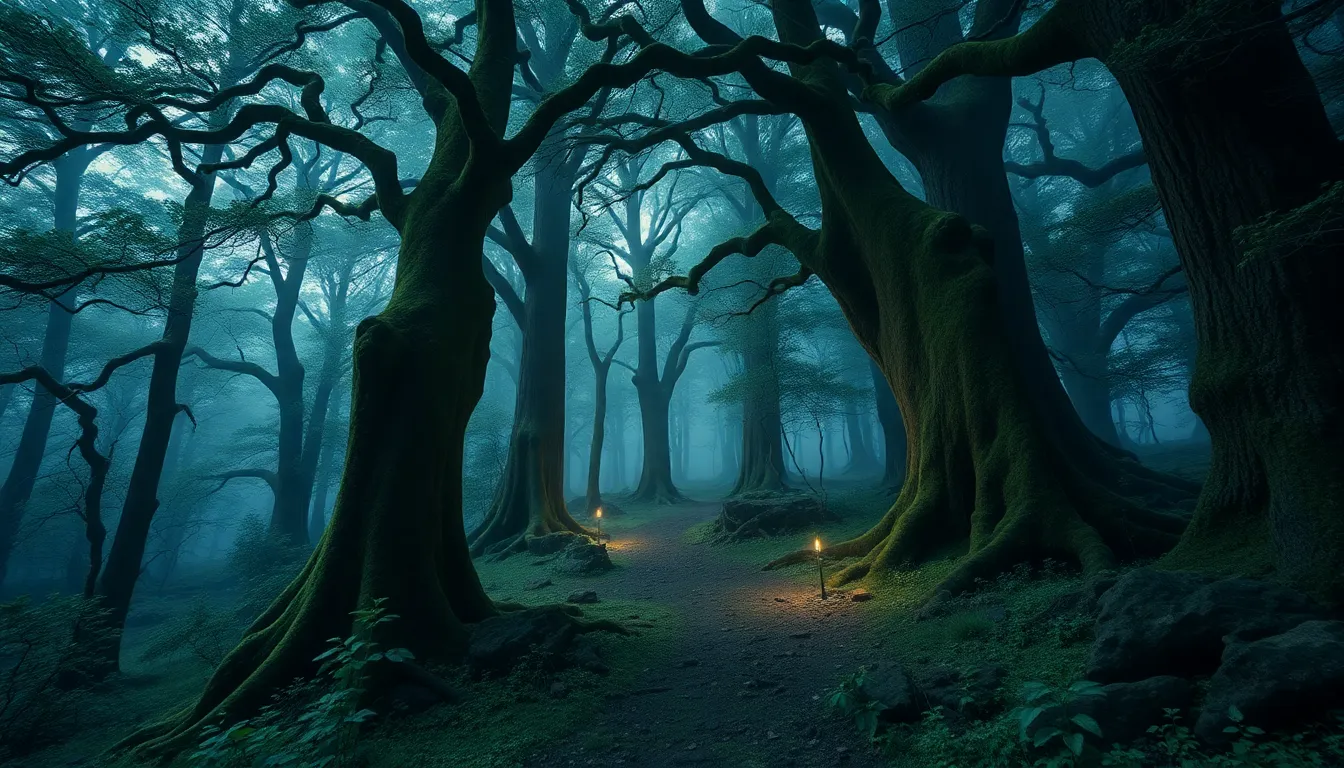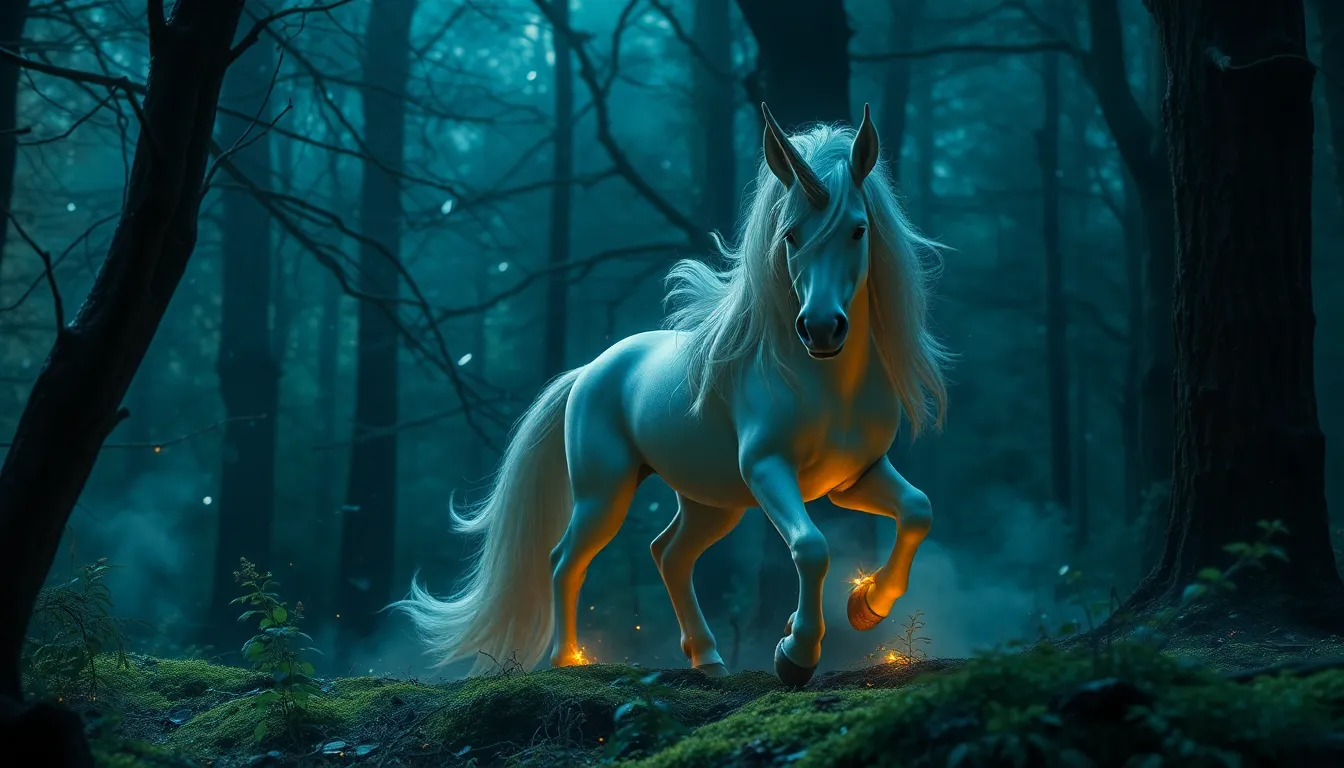Unraveling the Mysteries of Enchanted Forests: A Deep Dive
Introduction to Enchanted Forests
Enchanted forests have captured the human imagination for centuries, serving as settings for magical tales and profound reflections. These mystical woodlands, often depicted as places of wonder and mystery, are characterized by their lush greenery, towering trees, and an air of magic that seems to linger within their shadows.
Culturally, enchanted forests hold significant meaning across various traditions and societies. They are frequently portrayed in folklore and literature as realms where the ordinary meets the extraordinary, where mythical creatures roam and adventures await. From the fairy-tale forests of Europe to the sacred groves of indigenous cultures, these enchanted spaces symbolize a connection to nature, spirituality, and the mysteries of life itself.
The Ecology of Enchanted Forests
The ecology of enchanted forests is rich and diverse, showcasing unique flora and fauna that contribute to their enchanting atmosphere. These ecosystems often feature:
- Tall, ancient trees that create a dense canopy, filtering sunlight and creating a magical ambiance.
- A variety of understory plants, including ferns, mosses, and wildflowers that thrive in the dappled light.
- Wildlife, such as deer, foxes, and a myriad of bird species, that add life and movement to the forest.
Biodiversity plays a crucial role in creating the ‘enchanted’ feeling associated with these forests. The intricate relationships between various species—plants, animals, fungi, and microorganisms—contribute to a vibrant ecosystem that feels alive and mystical. This complexity fosters an environment where the unexpected is commonplace, further enchanting those who wander through.
Mythical Creatures and Legends
Enchanted forests are often intertwined with the lore of mythical beings. Common creatures associated with these magical realms include:
- Fairies: Small, magical beings often thought to be guardians of nature.
- Sprites: Playful spirits that embody the natural elements.
- Dryads: Tree nymphs who are connected to specific trees and can live as long as their tree does.
These legends vary across cultures. For example, in Celtic traditions, enchanted forests are often seen as portals to the faerie realm, while in Native American lore, certain trees are considered sacred and inhabited by powerful spirits. This diversity of stories reflects humanity’s deep connection to nature and the intrinsic magic found within these wooded realms.
The Science Behind the Magic
While enchanted forests are often seen through a lens of fantasy, there are natural phenomena that contribute to their magical aura. Some of these include:
- Bioluminescence: Certain fungi and insects emit light, creating an ethereal glow in the darkness.
- Unusual plant growth: Unique adaptations, such as twisted branches or vibrant colors, can make a forest feel otherworldly.
The role of light and sound is also significant in shaping the forest experience. The interplay of sunlight filtering through leaves creates mesmerizing patterns on the forest floor, while the sounds of rustling leaves and chirping birds add layers of enchantment to the atmosphere.
The Psychological Impact of Enchanted Forests
Spending time in nature, particularly in enchanted forests, has profound effects on mental health and well-being. Studies have shown that immersion in nature can lead to:
- Reduced stress levels and increased feelings of calm.
- Improved mood and enhanced cognitive function.
- Increased creativity and problem-solving abilities.
The concept of nature therapy, which involves using natural environments to promote healing and well-being, has gained popularity in recent years. Enchanted forests, with their serene beauty and tranquil ambiance, serve as ideal settings for this therapeutic practice, encouraging individuals to connect with nature and find solace in its embrace.
Exploration and Adventure in Enchanted Forests
There are numerous enchanted forests around the world that beckon adventurers and nature lovers alike. Some of the most popular include:
- Aokigahara: Also known as the Sea of Trees, this Japanese forest is known for its dense vegetation and serene beauty.
- Black Forest: Located in Germany, this iconic forest is steeped in folklore and is famous for its fairy-tale charm.
- Redwood National Park: Home to towering redwoods, this California park offers breathtaking views and a sense of wonder.
When exploring these magical places, it’s essential to practice responsible tourism. Best practices include:
- Staying on marked trails to minimize impact on the ecosystem.
- Respecting wildlife and not disturbing their habitats.
- Leaving no trace by taking all trash and belongings with you.
Conservation Efforts and Challenges
Despite their beauty and significance, enchanted forests face numerous threats. Some of the most pressing challenges include:
- Deforestation: Logging and land development can lead to habitat loss and fragmentation.
- Climate Change: Altered weather patterns can disrupt delicate ecosystems and threaten biodiversity.
Conservation initiatives are essential to preserving these mystical environments. Organizations worldwide are working to protect enchanted forests through:
- Establishing protected areas and national parks.
- Promoting sustainable forestry practices.
- Engaging local communities in conservation efforts.
Art and Literature Inspired by Enchanted Forests
Enchanted forests have inspired countless works of art and literature throughout history. Notable examples include:
- A Midsummer Night’s Dream by William Shakespeare: This play is set in a magical forest filled with fairies and enchantment.
- The Chronicles of Narnia by C.S. Lewis: The woods in this series are often depicted as gateways to other worlds.
- Art by Gustav Klimt: His works often feature lush, dream-like landscapes that evoke the feeling of enchanted forests.
The impact of these forests on contemporary storytelling and art continues to resonate, reminding us of the magic that nature holds and its ability to inspire creativity.
Visiting Enchanted Forests: A Guide for Adventurers
For those eager to explore enchanted forests, here are some tips for a safe and enjoyable experience:
- Research the area before visiting to understand its trails, wildlife, and any potential hazards.
- Dress appropriately for the weather and wear sturdy footwear.
- Bring essentials such as water, snacks, and a first-aid kit.
- Consider guided tours for a deeper understanding of the ecosystem and its myths.
Recommended itineraries could include:
- A half-day hike in the Black Forest, exploring its trails and local legends.
- Camping under the stars in Aokigahara, experiencing its serene nights.
- A guided tour of the Redwood National Park to learn about its ancient trees.
Conclusion: The Enduring Allure of Enchanted Forests
Enchanted forests continue to hold a special place in modern culture, symbolizing both a connection to nature and a realm of possibility. Their beauty and mystery invite exploration and appreciation, encouraging us to seek refuge in the natural world.
As we reflect on the significance of these magical ecosystems, let us embrace the call to adventure and the desire to protect and preserve enchanted forests for future generations. Whether through storytelling, exploration, or conservation, the allure of enchanted forests remains an enduring testament to the magic of nature.



